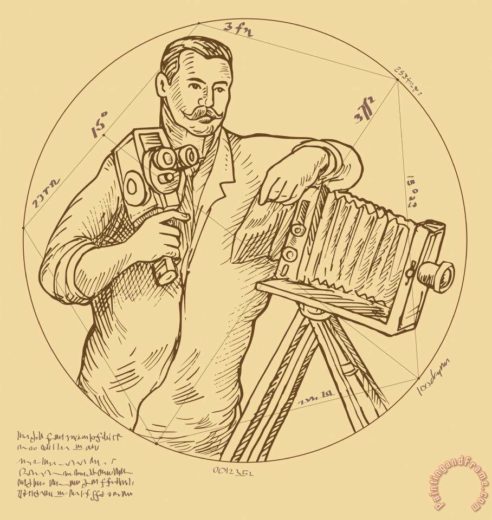2017: The Year You Launch Your Video Ads

I was reading an article recently about Generation Xers and how they consume content on YouTube and how to best engage with this coveted consumer cohort. The article noted that Gen Xers, who were born between mid-1960 and late 1970s, are predominantly using YouTube for trips down memory lane, for news content and for DIY videos. I am a Gen Xer and I agree with this theory, but would add that YouTube is also great to learn more about dogs that fail at being dogs.
After reading this article, it reminded me of a presentation with one of our Google analysts where they mentioned the stat that video advertising is expected to grow by 21% annually until 2019, at which point video ads will equate to approximately 54% of the total desktop display ad market. What is causing this strong growth projection? This is partly due to an echo effect of seeing more video content on the social platforms that we use daily, for example, Facebook invested early in promoting live video posts. The rise in ephemeral videos through platforms like Snapchat, Instagram, Periscope and Meerkat, have made videos an accepted and casual method of sharing information with the world.
The psychology behind the growth of social media is fascinating, ranging from theories that we are lazy and do not want to do the hard work of interpreting human reactions, to the incessant need for suspense, novelty and instant gratification. Regardless of the deep, innate reasons for loving live and prerecorded video content, the statistics are showing the steady growth of this marketing stream. Snapchat claims to have 10 billion daily video views, YouTube has over a billion users and Facebook reported in 2015 that their 1.5 billion users watch up to 8 billion videos per day (although that stat is partially due to autoplay videos). This year, Facebook reported that users spend more than triple the time watching live videos versus non-live videos.
Nevertheless, Google is promoting video as the next big thing and the last time we heard this buzz was in 2012/2013 when mobile was touted as the next frontier. Since we now are seeing the fruit of the mobile prediction, let’s assume that the trend conjurers are going to be right about video ads and explore how to navigate the two most popular video platforms, tips how to track the success and optimize your video ads.
Facebook Video
Upload an existing video, create a slideshow of images or record live video about your products and services and filter the audience dimensions to best suit your ideal demographic. The technical specifications for your video ads are listed here.
How To Track “Ad Success” In Facebook
- Look at the breakdown of your total views to see how many of those views were click-to-play and views over 25%, 50% and 75%. Looking at the stats can alert you to videos that need to be shortened, or when some ad campaigns have higher click-to-play stats, that could be an opportunity to test video description copy, titles or video title images.
- Consider the cost per video view at the 3 and 10 second length of time. Video views are a brand awareness opportunity that could be compared to a paid search cost per click.
- Establish a conversion action, such as purchase, click to website or form fill so you can track the volume of engagement and calculate ROAS.
YouTube Video
YouTube video ads are created in AdWords and allow you to feature your ads in the YouTube search results and on the Google Display Network. These video ads are called TrueView by Google, because you are only paying for the ad when it is viewed by a user. There are 3 different formats for these TrueView ads: in-stream, in-search and in-display. Similar to Facebook, you can create new video content, in this case you would go to your dedicated YouTube channel and find the Creator Studio Tools section. If you already have the ad, you can upload an existing video in the AdWords platform, which make it easier to monitor performance alongside your other paid search campaigns. The technical specifications for your video ads are listed here.
How To Track “Ad Success” In YouTube
- In AdWords, you can see views, view rate, average cost per view, clickthrough rate and further YouTube engagement with your channel, for example, did someone view the video and then explored and watched other videos in your channel feed (“earned views”)? Or did they subscribe within 7 days of the original video view (“earned subscriber”)? Lastly, you are able to see keyword search query data that will help you fine-tune your ads messaging and save money by adding negatives to your video campaign.
- Like Facebook, you can track the volume of video viewership of video play length between 25%, 50%, 75% and 100%.
- Since this is a Google product, you can track Analytics statistics for your video ads like bounce rate, new visitors and pages per visit from viewers of your YouTube ads. Additionally, you can analysis the conversion path of your YouTube ad viewers by looking at Multi-Channel Funnels (found in Analytics under Conversions).
How To Optimize Video Ads
- Tip 1: Consider generating a video that is visually meaningful without sound, since most users browse in public and can not listen to the ad and 80% of users react negatively towards the advertiser when ads unexpectedly play sound. Captions can be added by uploading a SRT file to the edit video section of your video post and can lead to a 12% increase in video views.
- Tip 2: Keep your video short and to the point, specifically, who you are and what you do. Make sure there is an easy to understand call to action that is connected to your message. For example, a video testimonial about the quality of your product is very effective but make sure you invite users to learn more on your page or take advantage of a special offer to buy it themselves.
- Tip 3: It is critical to engage with past users with a fresh message and Facebook and YouTube makes this easy by allowing you to build remarketing lists. Facebook bases their remarketing lists on customer lists, past website visitors, app downloaders or people who have previously engaged with your Facebook content. On YouTube/Google, you can create a remarketing list from users that viewed any video from a channel, visitors of a channel page, users that liked/commented/shared a video, subscribers to a channel and more. Additionally, you can expand your current fan base by creating a Facebook Lookalike audience or a YouTube/Google Customer Match audience which is generated from a source audience of past users and customers, or people that somehow previously engaged with your content.
- Tip 4: Test long and short video descriptions and your headlines to make sure all aspects of your video ad are attracting the right audiences. For example, if you have a relatively new product, people might need a little more information before going to your website. Alternatively, your video visuals might be compelling and inviting enough that you want to use your descriptions to build a mystery. Either way, run a few variations of the video description or headlines to learn what level of content elicits the best response.
- Tip 5: Review the time of day your videos are viewed and various demographics reports for possible insights about your customer and their online preferences. In Facebook, you can find these data points in the Breakdown reporting section and for YouTube, you can find this information in Analytics.
Final Thoughts
The competition for keywords in Google and Bing has made paid search an increasingly significant part of the marketing budget, so finding new and affordable ways to reach your target audience is critical for the future of your marketing department. Video ads are increasing in popularity, but fortunately the CPVs are still relatively low, making this the ideal time to invest and test your video ad offerings and tap into an exciting and growing advertising platform.



